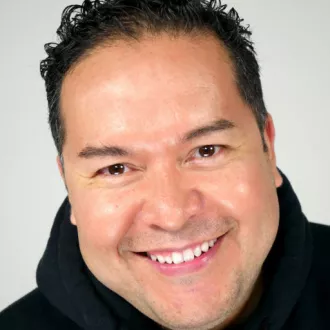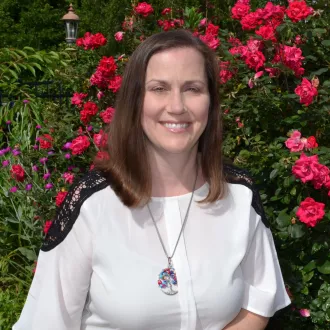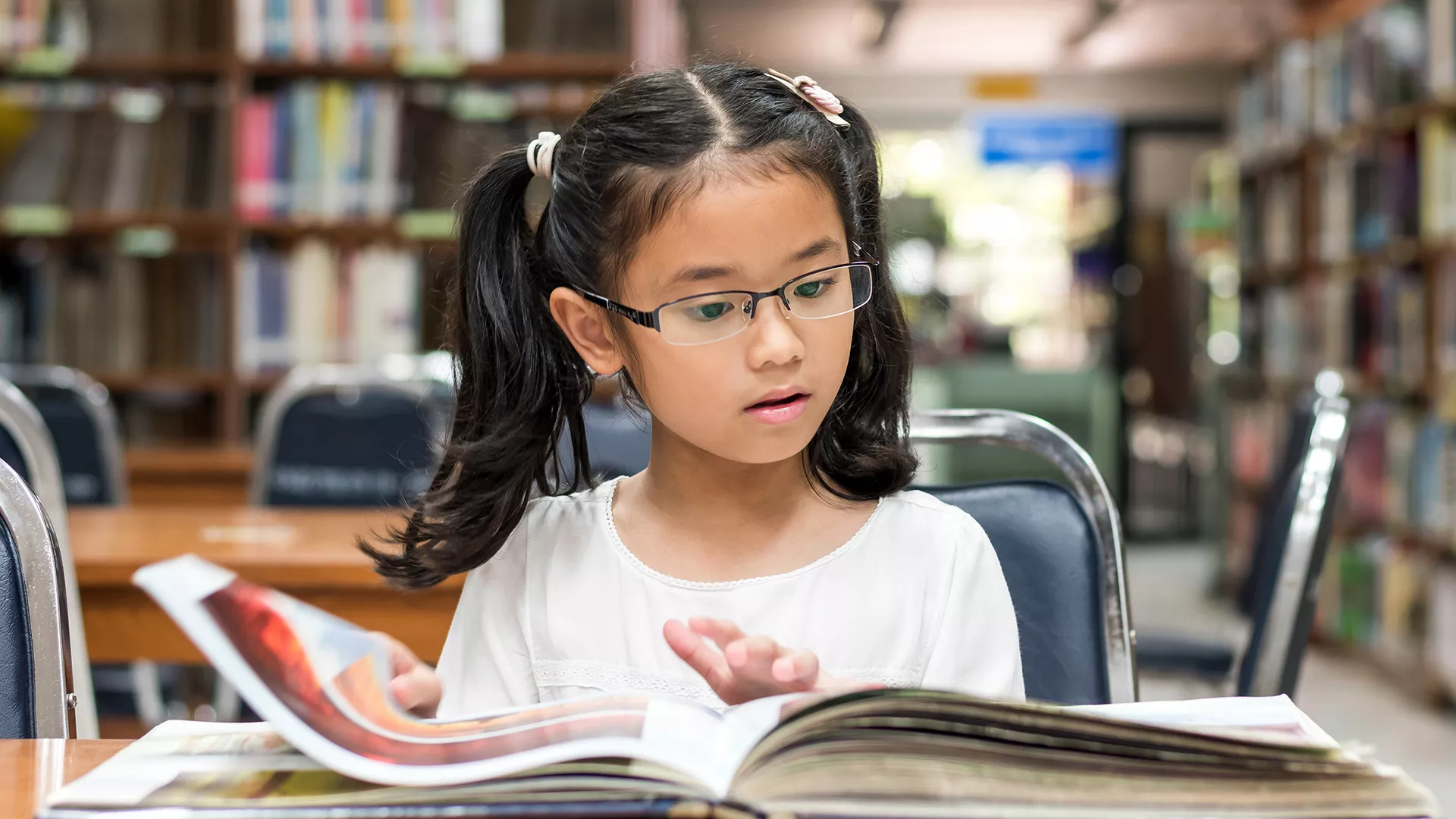
Key Takeaways
- Reading has become too wrapped up in high-stakes testing. And the stuff that's fun for kids to read has been discounted by too many adults.
- Students need access to the books they want to read—and the freedom to make their own choices. Creating opportunities for students to read and talk about books also helps.
- NEA members are doing this and more—and they're seeing their school library circulation numbers skyrocket.
Matilda Wormwood’s heart would break.
The famous, fictional bookworm—star of the eponymous children’s book by Roald Dahl—taught herself to read to escape her ghastly parents. She loves books. Can’t keep her nose out of them.
But today, she’d be mostly alone. National research shows that the number of children and young adults who say they read for fun has dropped to an all-time low. In 1984, more than a third of 13-year-olds said they read every day for fun; today 17 percent say the same. Meanwhile, the percentage that said they never read for fun went from 8 to 29.
Quote byR. Joseph Rodriguez

Is this another thing that social media has killed? Maybe. But NEA members point to other factors. Reading is too wrapped up in standardized testing. When you’re forced to read for high-stakes tests and constantly graded—and punished—for how well you comprehend impassive reading passages, it’s not too fun. Making matters worse, many kids have been told the books they like to read aren’t the “right books” to read.
“The joy of books has been killed. Suppressed, tested, and killed,” says R. Joseph Rodriguez, a high school English and language arts teacher in Austin, Texas, who recently was named a teaching fellow by the National Book Foundation. “I hate when students are called ‘struggling readers.’ We need to see them as students who need a revival! I want a revival!”
For Rodriguez, the key is providing students with access to good books—and the freedom to pick for themselves.
Indeed, it’s not a secret what motivates kids to read.
John Guthrie, a professor emeritus at the University of Maryland, has studied “reader motivation” for decades. Nearly 30 years ago, he identified a few things that lead kids to read. At the top of the list was curiosity, or a desire to learn; “aesthetics,” meaning the pure pleasure of reading; and social aspects.
“It’s access, choice—and talking about books,” says Marcia Kochel, librarian at Atlanta’s Druid Hills Middle School and a former winner of the “I Love My Librarian Award” from the American Library Association.
Give Them the Books They Want to Read
Quote byMarcia Kochel
“You have to buy the books they want,” Kochel says.
When Kochel first came to Druid Hills in 2016, her library didn’t have any graphic novels. No manga. She applied for grants, got all the money she could from her PTA, and even held a fundraising concert with the Grammy Award-winning Indigo Girls. (Singers Amy Ray and Emily Saliers attended Druid Hills when it was a high school and Saliers' mother was a public librarian.) “We buy and buy and buy what the kids want us to buy,” says Kochel.
For Kochel, that means scary, spooky stuff, true crime, adventure, romance, and more. For Tamara Cox, a South Carolina high school librarian, it’s “mysteries, mysteries, and mysteries,” she says. “Any time I see a new mystery book, it’s pretty much an automatic order for me,” she says.
Kids love graphic novels—and that’s fine with Kochel and Cox. “Julie Stivers, the 2023 School Librarian of the Year, talks about what she calls ‘reading trauma,” says Kochel. The term refers to the harm done when reading is associated with high-stakes tests—and the only books that “count” are classic texts by White men.
“Kids get told all the time that what they like to read isn’t really reading,” says Kochel. “They will never hear that here.”
Thanks to conscientious publishers and authors, children and young adults have better access to books that explore and represent themes like homelessness, community violence, and so on. These books are vital for helping students understand and process the world around them, Kochel says. But publishers also need to publish books that simply make kids laugh, she says.
“We have great books dealing with heavy problems, but 80 percent of the kids just want something fun!”
Diverse Books Matter
In Rodriguez’ Texas classroom, the majority of students are Latino. He also has Black, Asian American, and White students.
His students notice racial representation. One recently told him that the blockbuster 90s TV show “Friends” had white-washed New York City with its all-White cast. “Why is this funny? This show is mean,” he told Rodriguez.
Students should enjoy the freedom to read, says Rodriguez, who has hundreds of diverse titles in his classroom library and has written about his efforts to provide students with a choice of books. Today, it’s a challenge for educators like him to provide students with books that celebrate and represent their diversity, as book bans reach a historic level.
The most frequently banned books include characters of color or LGBTQ+ people. And yet, these are books that kids are asking for, notes Kochel. “These last couple of years, kids have been coming to me and saying, ‘What do you have with LGBTQ+ themes?’” she says. “Ten years ago, they might have been embarrassed. Today, they’re excited about these books and affirmed that we have them!”
Publishers have gotten the message, says Kochel. “We’re seeing a nice uptick on representation,” she says. Say you’re a Black kid who loves fantasy books. These days, you can find a time traveler who looks like you—and that’s fun.
Classroom Resources to Celebrate the Freedom to Read
Everyone has the right to choose what to read. In celebrating that right, you can help bring new perspectives and more understanding, empathy, and joy to readers in your community.
Use our resources to highlight why it is important to give kids choice in what they read, what you can do to support and protect their right to choose books from all viewpoints, and how you can help them access relatable, enjoyable reading materials.
Make Time for Reading
It has been more than 40 years since Ramona Quimby’s third-grade teacher told her class that they would sit quietly at their desks, every day after lunch, and read books of their own choosing. “Drop Everything and Read,” or D.E.A.R., is what author Beverly Cleary named the practice in “Ramona Quimby, Age 8.”
Today, it’s still an invaluable part of the school day in thousands of classrooms around the nation—and celebrated on D.E.A.R. Day on April 15.
At Kochel’s school, D.E.A.R. means “Dragons Excited About Reading,” a reference to the school’s fiery mascot. “Our teachers are purposeful about making sure there’s time to read in the school day,” she says. Multiple times a day, eighth-grade classes start with 10 minutes of silent, at-your-desk reading— “and it’s a book of their choice,” she points out.
“We say that reading is the greatest skill that students can acquire in school, but if we’re not giving them time to do that during school…do we really think that?” asks Kochel.
At Rodriguez’ school, he and his department colleagues dedicate 20 to 30 minutes of every 90-minute block to what they call “structured, independent reading.” Structured because the time is faithfully set aside, he says. Independent because the material is their choice. It’s critical that students choose their own books, he says. And it’s fine with Rodriguez if it’s an audiobook, comic book, or whatever, on whatever grade level they choose.
Reading also can—and should—be a community activity. Indeed, one of the motivations to read that Guthie identified among students in 1995 was “social aspects,” or the process of sharing books or ideas about books with friends and family. No students are too old for read-alouds! And many will enjoy talking together, with their educator, about the book that they just heard.
Check out these Read Across America resources and ideas for storytelling activities.
Librarians: “Genrefy” Your Shelves
Kids who love to read also love to wander the stacks, browsing for a title that catches their eye or a familiar author’s name. But for many, it can be overwhelming, notes Cox, who is National Board certified. “It’s like dumping a person who hates to exercise in a gym—and telling them to work out,” says Cox. “They don’t even know where to start!”
Organizing books by genre helps those students navigate the library, says Cox, who has written about the process of “ditching Dewey” and whose know-how was featured in this case study of genrefication.
Horror books go here. Manga over there. Each genre has its own place.
Quote byTamara Cox

The process of re-organizing thousands of books can be daunting for school librarians, but the library isn’t for librarians, Cox points out. “One of my first jobs was in a grocery store. I still know the code for peaches!” she says. “But the people who shopped there didn’t need to know [the code]. They needed a label: “Here’s the peaches!”
“Are you doing things because it’s easier for the librarian or easier for the kids?” asks Cox. “For me, it’s about helping kids find the books they like.” After genrefying, Cox’s circulation numbers tripled.
As an additional bonus, genrefying also helps librarians see the gaps in their collections, Cox notes. “One thing I noticed right away—teenage girls love romance, but I only had 20 romance books! It’s easier to identify weak areas and see what we need to add.”
Make it Fun! NEA members, especially librarians, also are doing a million things to make reading more fun. A few of those ideas are:

Take Action on Racial & Social Justice
We are on a mission to dismantle unjust systems, and together, as educators and allies, we can take actions to address the inequities that result from institutionally racist policies and practices in our schools and the communities in which our students live.
Join us to work for access and opportunity for all students.
